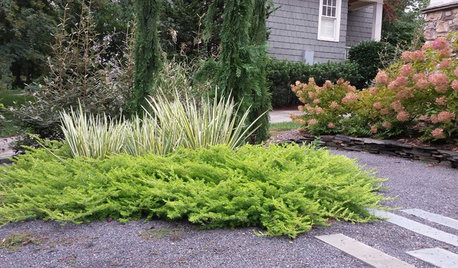Juniper Skyrocket w/Cotinus?
acw2355
10 years ago
Related Stories

PLANTING IDEASThese Aren’t Your Grandparents’ Junipers
Dislike junipers? Maybe it’s time to discover new varieties and new uses for this garden workhorse
Full Story
LIFEHow Your Landscaping Can Keep Burglars Away
Prevent home break-ins with strategic landscaping and good practices instead of menacing — and maybe less effective — measures
Full Story
BEFORE AND AFTERSSee 6 Yards Transformed by Losing Their Lawns
Wondering whether a turf lawn is the best use of your outdoor space? These homeowners did, and they found creative alternatives
Full Story






Embothrium
ogcon
Related Professionals
Londonderry Landscape Architects & Landscape Designers · West Milford Landscape Architects & Landscape Designers · Leawood Landscape Architects & Landscape Designers · Wake Forest Landscape Contractors · Tempe Landscape Contractors · Danvers Landscape Contractors · Firestone Landscape Contractors · Lexington Landscape Contractors · Mashpee Landscape Contractors · Mastic Beach Landscape Contractors · Medford Landscape Contractors · Mequon Landscape Contractors · Secaucus Landscape Contractors · Antioch Landscape Contractors · Greenfield Landscape ContractorsSara Malone Zone 9b
gardener365
ken_adrian Adrian MI cold Z5
acw2355Original Author
Embothrium
Sara Malone Zone 9b
acw2355Original Author
botann
gardengal48 (PNW Z8/9)
unprofessional
Embothrium
acw2355Original Author